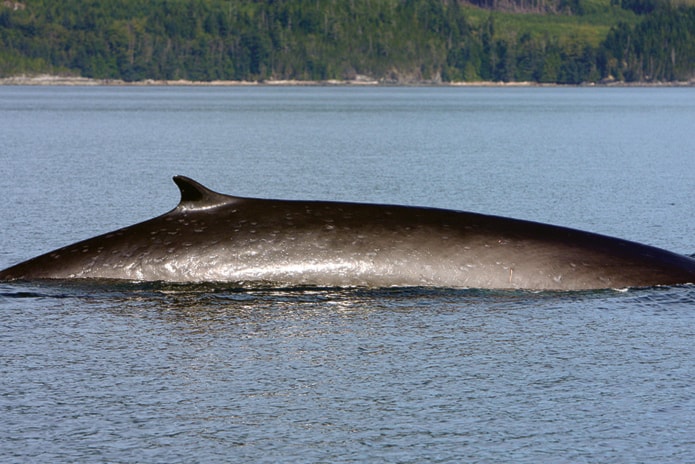A necropsy on a 65-foot deceased fin whale found in Prince Rupert Harbour determined blunt force trauma could have been the reason for its death.
Blunt-force trauma is typically a physical trauma caused by forceful impact on the body, such as a ship propeller.
The fin or finback whale is the second-largest species of whale in the world by size, after the blue whale. It is also one of the fastest whales reaching up to 40 km/hr according to Fisheries and Oceans Canada (DFO).
On Aug. 29, DFO Conservation & Protection Fishery Officers, with assistance from the Prince Rupert Harbour Authority and the Lax KwB次元官网网址檃laams First Nation located and secured the dead whale at the port.
The Lax KwB次元官网网址檃laams First Nation conducted a ceremony to bless the animal before its necropsy on Sept. 2. The following procedure was led by veterinary pathologist Dr. Stephen Raverty to discover the possible cause of death.
While there was evidence of blunt force trauma, they will also perform a tissue analysis to try to secure more specific answers. Results can take up to 8-10 weeks.
According to DFO, fin whales are now mostly found in the North Pacific and the North Atlantic oceans.
In the past, they were quite commonly seen in Canadian Pacific waters, but commercial whaling activity greatly reduced their numbers.
DFO says the results of such necropsies feed into a growing body of knowledge that helps in assessing threats to whales from a population health perspective. This data allows them to look at trends, pathogens, or other indicators that may affect the life cycles of whales.
The fin whale is now listed as vulnerable on the International Fund for Animal Welfare's (IFAW) Red List. After a century of unregulated hunting, they were endangered until 1980, with numbers as low as 3,250 and 6,500.
In a reassessment in 2018, IFAW found that the species regained their population with 100,000 mature individuals reported globally. However, factors such as hunting, vessel strikes, entanglement, ocean noise, and climate change continue to threaten their existence.
A DFO officer also informed The Northern View they were recently successful in disentangling an entangled humpback whale in Hecate Strait.
They encourage everyone to report injured, disturbed, entangled and dead marine mammals by calling the Fisheries and OceanB次元官网网址檚 Observe, Record, Report/Marine Mammal Incident Hotline at 1-800-465-4336 or by email at:B次元官网网址疍FO.ORR-ONS.MPO@dfo-mpo.gc.ca.



